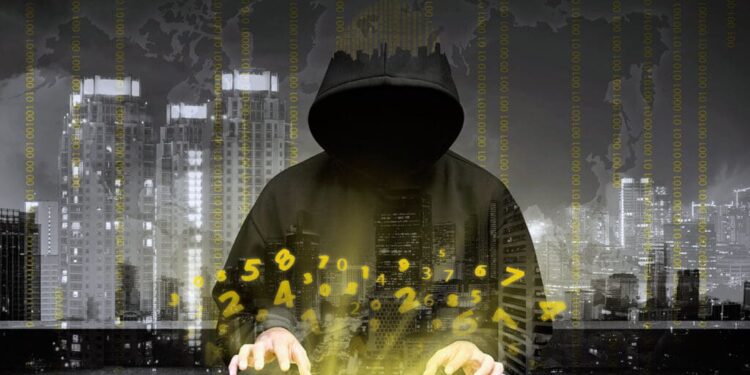Introduction
The radicalisation journey of a lone-wolf terrorist often begins not with a clandestine meeting or whispered conversation, but with a simple click. While traditional forms of radicalisation relied on face-to-face contact, the distribution of physical propaganda, or personal mentorship within extremist cells, the internet has profoundly transformed this trajectory. It now serves as the first point of contact—introducing individuals to radical ideologies, validating their frustrations, and gradually pulling them into echo chambers of hate and violence. With its vast reach, anonymity, and ease of access, the internet offers a discreet and far-reaching pathway to radicalisation, recruitment, and even operational planning. Unlike traditional channels, the digital environment enables self-radicalising individuals to find community, instruction, and ideological justification without ever physically interacting with another person. This paradigm shift has made lone-wolf terrorism more unpredictable and difficult to detect, requiring a reassessment of how modern societies understand and confront the evolving threat landscape.
What is Lone-Wolf Terrorism, Historical Background and Causes of Lone-Wolf Terrorism
Definition of Lone-Wolf Terrorism
Lone-wolf terrorism: refers to acts of terrorism carried out by individuals who operate independently of any terrorist organisation. These individuals plan, initiate, and execute attacks without direct support or operational involvement from larger groups [1] [2]. Lone wolves typically act alone to achieve political, religious, or ideological goals, often driven by personal motivations or mental health issues [3] [4].
Historical Background
Lone-wolf terrorism has a long history, with notable instances spanning over 150 years. Early examples include anarchist and leftist doctrines in the 19th century, and more recent waves involving right-wing extremists and jihadi Islamists [5]. The phenomenon has gained significant attention in recent decades, particularly with the rise of the internet, which has facilitated self-radicalisation and the spread of extremist ideologies [5] [6]. High-profile cases such as the attacks by Anders Behring Breivik in Norway and the Christchurch shooting highlight the ongoing threat posed by lone wolves [7] [8].
Causes of Lone-Wolf Terrorism
The causes of lone-wolf terrorism are multifaceted and can be categorised into several key areas:
- Personal Motivations: Lone wolves often have personal grievances, frustrations, or mental health issues that drive them to commit acts of terrorism. These motivations can be deeply personal and vary widely among individuals [1] [3] [9].
- Ideological Influences: Many lone wolves are influenced by extremist ideologies, which they often encounter and adopt through online platforms. These ideologies provide a framework for their actions and validate their beliefs [4] [9] [10].
- Social Isolation and Radicalisation: Despite acting alone, lone wolves are not entirely isolated from social processes. They often undergo radicalisation through interactions in online environments, where they connect with like-minded individuals and extremist content [4] [6].
- Psychological Factors: Psychological disturbances and social ineptitude are common among lone-wolf terrorists. These factors can contribute to their radicalisation and the decision to carry out attacks independently [9].
Understanding lone-wolf terrorism requires a comprehensive approach that considers the individual’s motivations, the influence of extremist ideologies, and the role of online radicalisation. This multifaceted view helps in developing strategies to detect and prevent such attacks [4] [6] [9].
When Lone-Wolf Terrorism Meets the Internet
The internet has emerged as a powerful and accessible tool for the lone-wolf, offering a faster and more discreet alternative to traditional methods. Online platforms, including social media, encrypted messaging apps, and extremist forums, have become virtual incubators where individuals can be exposed to radical ideologies, self-radicalise in isolation, and access detailed guidance on carrying out attacks. This shift has lowered the barriers to entry for terrorism, enabling individuals to be influenced, equipped, and mobilised without direct contact with a formal terrorist network.
How Has the Internet Influenced the Rise of Lone-Wolf Terrorism?
Influence of the Internet on Lone-Wolf Terrorism:
- The internet plays a significant role in the radicalisation of lone wolves, serving as an efficient communication tool and a place where lone wolves may leak indications of their future actions [6] [4].
- The internet facilitates radicalisation through access to information, amplifying group polarisation, and legitimizing extreme ideology and violence through echo chambers [11].
- The phenomenon of lone-wolf terrorism has witnessed a noticeable spike with the onset of the Internet Age, with the internet being a crucial catalyst in galvanizing radical talk into radical action [13].
Psychological Factors Contributing to Lone-Wolf Terrorism in the Context of Internet Influence:
- Lone wolves experience their radicalisation processes independently but are not entirely isolated from social processes, as they establish relationships and interactions, particularly through online environments, which facilitate traditional group dynamics crucial to radicalisation [4].
- The romance of “jihadi chic” or “jihadi cool” was identified as an essential factor in the self-radicalisation of a lone wolf terrorist, emphasizing the psychological influence of online narratives and imagery [12].
Facilitation of Radicalisation and Recruitment of Lone-Wolf Terrorists:
- The internet is used extensively during radicalisation, with online and offline radical channel critical to lone actors’ adoption and maintenance of both the motive and capability to commit acts of terrorism [14].
- The virtual interactivity of terrorist propaganda and recruitment, especially with the targeting of specific audiences, is facilitated by the expansion of online social media, challenging counterterrorism efforts [15].
Key Differences Between Lone-Wolf Terrorism Influenced by the Internet and Traditional Lone-Wolf Terrorism:
- The internet has led to a noticeable spike in lone-wolf terrorism, with the online environment serving as a crucial catalyst in galvanising radical talk into radical action, distinguishing it from traditional lone-wolf terrorism [13].
- The internet primarily facilitates radicalisation through access to information and amplifying group polarisation, challenging the view that offline interaction is necessary for radicalisation to occur and emphasizing the unique influence of the online environment [11].
Policy Recommendations for Addressing Internet-Facilitated Lone-Wolf Terrorism
- Develop a Comprehensive Digital Surveillance Strategy with Legal Oversight
Law enforcement agencies should be equipped with advanced tools to monitor open-source online platforms, encrypted messaging apps, and dark web forums where radicalisation and planning often occur. This must be done under strict legal frameworks to safeguard civil liberties, ensuring any surveillance is targeted, proportionate, and judicially reviewed.
- Enhance Inter-Agency and International Collaboration on Cyber Intelligence
Given the global nature of internet-based radicalisation, national counter-terrorism agencies must coordinate closely with cybercrime units, regional partners, and international organisations (e.g., INTERPOL) to share intelligence, digital footprints, and early warning signs across borders.
- Invest in AI-Driven Detection of Radical Content and Linguistic Markers
Drawing on evidence from recent research, governments should fund the development and deployment of AI and machine learning tools that can detect linguistic cues, behavioural anomalies, and radicalising content in real time. These technologies could help identify at-risk individuals before they mobilise.
- Implement Digital Literacy and Counter-Narrative Campaigns
Policymakers should support nationwide digital literacy programs to build public resilience against online radicalisation. Additionally, creating and amplifying counter-narratives—particularly in languages and formats relatable to vulnerable youth—can help deconstruct extremist ideologies and reduce their appeal.
- Mandate Online Platforms to Report and Take Down Extremist Content
Social media and hosting platforms should be legally obligated to detect, report, and swiftly remove extremist content. Collaboration between government regulators and tech firms should also include regular audits and transparent accountability mechanisms.
- Support Mental Health Services as a Preventive Measure
Given the psychological vulnerabilities often present in lone-wolf terrorists, governments should increase investment in mental health screening and intervention services—particularly in online spaces where isolated individuals may show signs of radicalisation or distress.
- Incorporate Internet Radicalisation Dynamics into National Security Strategies
National counter-terrorism policies must explicitly account for the role of the internet in radicalisation and lone-wolf mobilisation. This includes updating threat assessments, training modules, and operational protocols to reflect the evolving digital threat landscape.
References
1. Understanding the Motivations of “Lone Wolf” Terrorists: The “Bathtub” Model – Ganor, B. Perspectives on Terrorism, 2021
2. UNDERSTANDING THE MOTIVATIONS OF “LONE WOLF” TERRORISTS The “Bathtub” Model – Ganor, B. Routledge Handbook of Transnational Terrorism, 2023
3. Prospects for Lone Wolf and SIMAD terrorism Gordon, T., Sharan, Y., Florescu, E. Technological Forecasting and Social Change, 2015
4. Not that lonely! assessing the “socialization” role of online environment in the radicalization process of lone wolves – Çıtak, E. EDPACS, 2025
5. Comparative lone wolf terrorism: Toward a heuristic definition – Feldman, M. Democracy and Security, 2013
6. Role of internet in Lone Wolf Terrorism – Zeman, T., Břeň, J., Urban, R. Journal of Security and Sustainability Issues, 2017m
7. Detecting Linguistic Markers for Radical Violence in Social Media – Cohen, K., Johansson, F., Kaati, L., Mork, J.C. Terrorism and Political Violence, 2014
8. Lone wolves: The new terrorism of right-wing single actors – Hartleb, F. Lone Wolves: The New Terrorism of Right-Wing Single Actors, 2020
9. The enigma of lone wolf terrorism: An assessment – Spaaij, R. Studies in Conflict and Terrorism, 2010
10. Leaderless resistance and the loneliness of lone wolves: Exploring the rhetorical dynamics of lone actor violence – Joosse, P. Terrorism and Political Violence, 2017
11. Mechanisms of online radicalisation: how the internet affects the radicalisation of extreme-right lone actor terrorists – Mølmen, G.N., Ravndal, J.A. Behavioral Sciences of Terrorism and Political Aggression, 2023
12. “Jihad Cool/Jihad Chic”: The Roles of the Internet and Imagined Relations in the Self-Radicalization of Colleen LaRose (Jihad Jane) – Picart, C.J.S. Societies, 2015
13. Comparative lone wolf terrorism: Toward a heuristic definition – Feldman, M. Democracy and Security, 2013
14. End of the Lone Wolf: The Typology that Should Not Have Been – Schuurman, B., Lindekilde, L., Malthaner, S., (…), Bouhana, N. Studies in Conflict and Terrorism, 2019 15. Why do terrorists migrate to social media? – Weimann, G. Violent Extremism Online: New Perspectives on Terrorism and the Internet, 2016






























